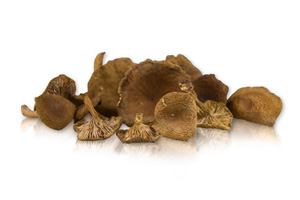This year is turning out to be one of the best in memory for fresh morel mushrooms. They are particularly abundant right now, which means that they aren’t just beautiful … they are pretty much as affordable as you will ever find them unless you pick them yourself. Here’s some morel lingo in case you find the terminology a bit confusing:
Though there are all sorts of different morel “varieties” you may read about (often separated by color: blond morels, black morels, gray morels, etc), the morel harvest breaks down into two major groups:
Conica Morels (aka Burn Morels):
Morel mushrooms’ affection for areas where there’s recently been a forest fire is legendary, and conica morels are what gave them that reputation.
The first spring after a forest fire, if that portion of the forest has had the understory (ground level) burnt out but the canopy has remained intact to supply ample shade, there will often be a one-year-only bumper crop of conica morels. They seem to love the shady, moist environment.
Generally, these “burn morels” are by far the most plentiful each year. Our foragers have described discovering whole mountainsides carpeted with freshly-fruited morels. Because these morels have developed in the ashes left by the fire, they often have a slight, but noticeable smoky note in their flavor.
Natural Morels:
Although of course all wild morels are natural, foragers use the term “natural morels” to refer to morels that grow sporadically in the same places year after year, independent of forest fires.
Though they seem to prefer areas with light soil disturbance (logging trails, deer trails, etc), they’re much more spread out and consequently much harder to find. They’re less plentiful than conica morels, but are highly prized because they’re more robust, thicker walled, and dense, with a meatier flavor.
Why 2010 is Offering a Morel Bonanza:
The Pacific Northwest has received (and is continuing to receive) a large amount of (relatively) warm rain this year, and the natural morels are loving it! Our foragers are discovering natural morels in much higher quantities. Availability drives the prices down, and because they’re naturals, the quality is unusually high.
A Note About Morel Grading:
There are two grades of morel mushroom that you’re likely to see for sale: #1 and #2. Here’s what those terms mean:
#1 Morels
The highest quality grade, #1 morels are younger specimens with a vibrant color, firmer texture, and more round shape. They’re the most beautiful and tasty morels available. All fresh morels sold by Marx Foods are #1 grade.
#2 Morels
#2 morels are the next step down in quality and price. They tend to be more mature than #1s. As morels mature they start to soften, darken in color and morph from the classic rounded morel shape to more pointed look resembling a Christmas tree. Their stems widen, and their tops are more likely to be dried out. Cases of #2 morels are also more likely to contain deformed or broken mushrooms.
In short, not only is this a great time to indulge your morel obsession, but also the perfect opportunity to try fresh morels if you’ve never had them…experience what chefs and foodies have been gushing about!
Hope that answers your burning morel questions!


